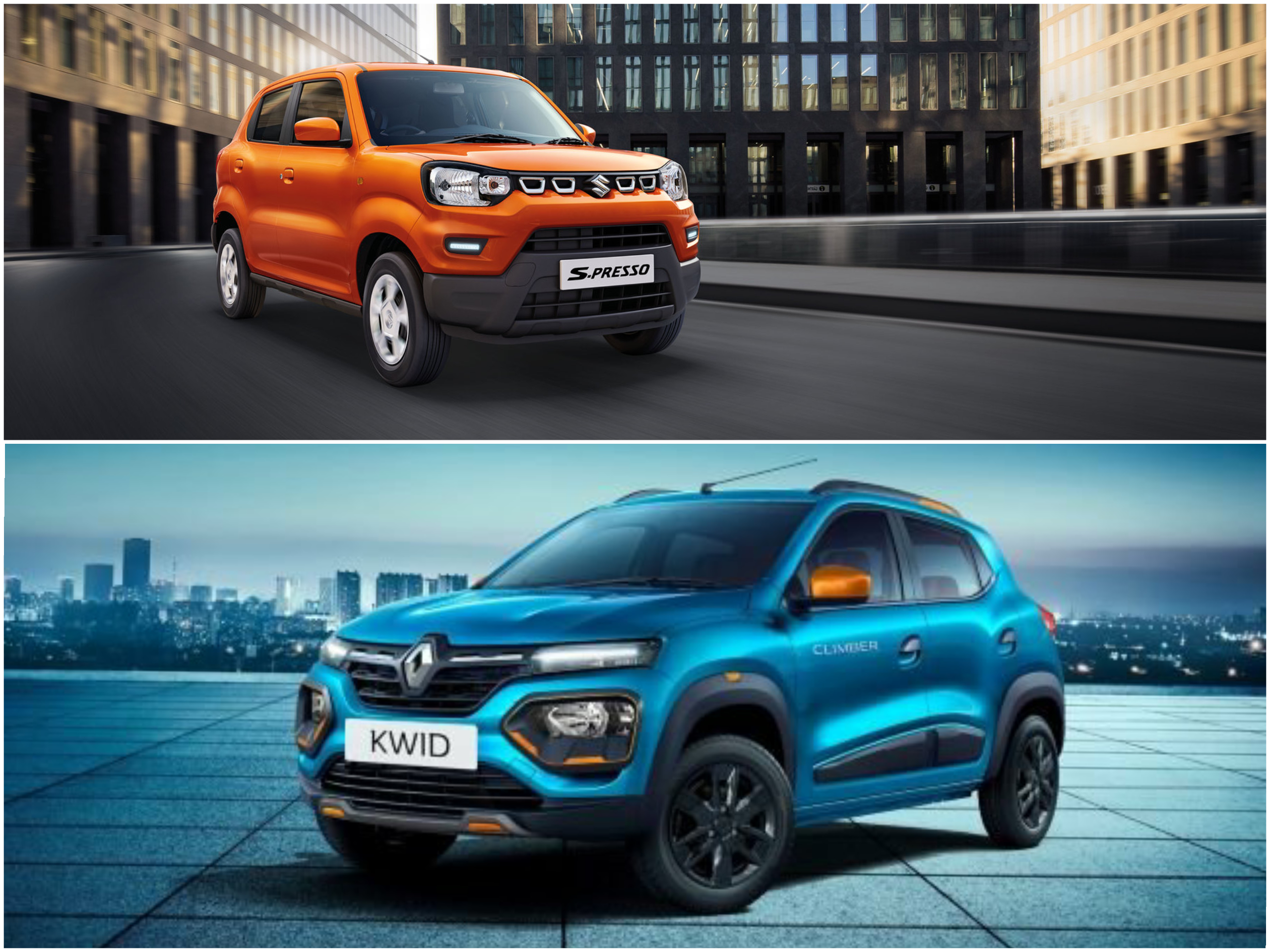Renault Kwid facelift vs Maruti Suzuki S-PRESSO
Maruti Suzuki S-PRESSO and Renault Kwid facelift are the newest entrants in the small car segment to stack up against each other

Two new small cars have been launched in India within a span of just two days, squarely aimed at boosting sales in the slumping auto sector. Freshly brewed from Maruti Suzuki is the new S-PRESSO and the Kwid facelift is the latest offering from Renault. Given the aggressive pricing of both cars, they stack up against each other quite closely in terms of price and features.
Dimensions of the Kwid facelift and the S-PRESSO
Both cars are unmistakably small in dimensions. The S-PRESSO though, is quite a tallboy. At 1564mm, the Maruti is significantly taller than that Kwid which stands at 1490mm. However, the Renault is both longer and wider than the Maruti. The Kwid is 3731mm long and 1579mm wide while the S-PRESSO is 3565mm long and 1520mm wide.
Design
Both brands are claiming to have SUV inspired designs and also offer rugged bits like side body cladding and skid plates in their new cars. The S-PRESSO’s design looks like a scaled down version of the Vitara Brezza thanks to its upright stance, sleek grille and twin chamber headlamps. The Kwid takes design inspiration from the Renault CITY KZ-E electric car which was unveiled in China a few months ago. The positioning of its LED DRLs is above the headlamps, and that’s something which is also seen on the Tata Harrier and MG Hector.
Features
In terms of features, both cars offer a central touchscreen infotainment system with Bluetooth, Android Auto and Apple CarPlay in their top of the line variants. The Smart Playcast system in the S-PRESSO however also lets you control the infotainment system via the Smartplay Studio app. They both offer digital instrument clusters as well with the only difference being the Maruti’s cluster being centrally mounted. Additionally, the S-PRESSO also gets steering mounted audio and voice controls. With everything being centered around charging and connectivity these days, both cars offer two 12V sockets, USB and Aux. In the Kwid, the USB port is a fast charging unit. Renault also claims to have best in class boot space of 279-litres along with a first in class rear view camera with guidelines.
Like scenic locations and powerful cars? Follow us on Instagram, Facebook and Twitter
Variants
The major difference between both cars are the variants. The Kwid is offered with two engine options – 0.8-litre and 1.0-litre. Under the 0.8-litre engine option, it’s offered in four variants – Standard, RXE, RXL and RXT while the 1.0-litre option only comes in the top spec RXT and Climber variants – both of which can be had either with manual or automatic transmission options. Unlike the Kwid, the S-PRESSO gets one engine option – the 1.0-litre K-series unit borrowed from the Alto and the WagonR. It’s offered across four variants and six trims – Standard, LXI, VXI, VXI+, VXI AGS and VXI+ AGS.
Power output and BS6 compliancy
The Kwid’s 0.8-litre engine makes 53.2bhp at 5678rpm and 72Nm of torque at 4386rpm while the 1.0-litre engine produces 67bhp at 5500rpm and 91Nm of torque at 4250rpm. The S-PRESSO’s engine also develops 67bhp of power and 90Nm of torque. However, the Kwid’s engines are BS4 compliant while the S-PRESSO gets a BS6 compliant engine. And that will certainly be a strong USP for the S-PRESSO, at least until Renault brings the more efficient engines into the Kwid.
Click on the image below for variant wise pricing:
Prices below are all ex-showroom


